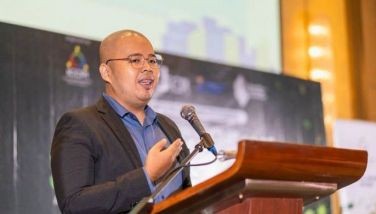The Kuratong case untangled

April 7, 2003 | 12:00am
The main procedural question that came up concerns the long standing practice of trial courts in provisionally dismissing cases either on motion of the prosecution or the accused or jointly, for variety of reasons.The practice seemed harmless because it does not terminate the criminal cases dismissed which may be revived or refiled.But the problem was that, most of the time, trial courts did not fix a period for such revival.
The lack of time bar for revival of the provisionally dismissed cases led to consequences harmful to both the prosecution and the accused and ultimately, to the administration of justice.
At first glance, the provisional dismissal may be a welcome development for an accused who greatly fears the consequences of his trial and conviction especially if the prosecution is so lazy to revive it or takes so much time in refiling it until witnesses become unavailable or their memories grow dim,or physical evidence are lost by the passage of time.Since there is no fixed time to revive a case, the prosecution may even forget to revive it or allow longer time to lapse, making it more difficult to prove the crime.This detrimental to the State or the "People of the Phillipines".
On the other hand,since a provisional dismissal does not terminate a criminal case, the proverbial damoclean sword remains over the head of an accused and the presumption of his innocence continues to be vulnerable thereby exposing him and his family to public suspicion and cold shoulder treatment .The delay caused by the lack of a fixed period for the revival of the case may also weaken his defense in the same manner as that of the prosecution since his witnesses may also disappear or their memories may fade.
It was under this condition of uncertainty in our rules on provisional dismissal that on March 17, 1999, Panfilo Lacson,accused as an accessory in the celebrated kuratong baleleng multiple murder cases( Nos. Q-99-81679 to Q-81689), filed a motion in the Regional Trial Court of Quezon City, for judicial determination of probable cause and for examination of witnesses.He set the hearing of the motion on March 22,1999, barely five days from the filing thereof.Although the public prosecutor was served with a copy of the motion, no copies were given separately to the heirs of the eleven victims or that subpoenae were issued to or received by them. The public prosecutor also did not notify the heirs of the victims, of the said motion or of its hearing on March 22,1999. Although a private lawyer appeared, he did so only for some but not all the close kins of the victims.
In his motion,Lacson did not pray for the dismissal, provisional or otherwise, of criminal cases nos.Q-99-81679 to Q-99-81689.What he wanted and asked the court was simply a judicial determination of probable cause for the issuance of the warrant and that pending such determination the issuance of the arrest warrant be withheld.
But on March 29,1999, even if Lacson’s counsel insisted that he did not ask for it,the RTC of Quezon City, presided by then Judge Agnir,Jr., dismissed the criminal cases against Lacson and his co-accused based on the affidavits of desistance of some of the victims’ heirs.The public prosecutor received a copy of the order on March 31,1999. Lacson and his counsel did not agree, impliedly or expressly to the provisional dismissal.In fact the counsel said they did not sign the order of provisional dismissal.
On December 1, 2000, while the provisionally dismissed criminal cases against Lacson and his co-accused had not yet been revived,Rule 117 Section 8 of the Revised Rules of Criminal Procedure(The Rule) was promulgated.The rule states that provisional dismissal of offenses punishable by imprisonment not exceeding six years and those punishable by imprisonment exceeding six years shall become permanent one year or two years respectively after the service of the order of dismissal on the public prosecutor. In other words after the lapse of those time bars, criminal cases cannot be refiled or revived anymore. In Lacson’s case the time bar is two years.But for the time bar to apply, the rule says that the provisional dismissal must be with the express consent of the accused and with notice to the offended party.
After the promulgation of The Rule, or on June 6, 2001, eleven criminal informations for multiple murder involving the kuratong killings were refiled by the public prosecutor against Lacson and his co-accused in the Regional Trial Court of Quezon City.Lacson questioned this refiling. He contended that under Section 8, Rule 117,the provisional dismissal of the criminal cases by Judge Agnir,Jr. had become permanent because the two years time bar had already lapsed. He said that the criminal cases should have been refiled within two years from the issuance of order the provisional dismissal on March 29,1999. So the criminal complaints should have been refiled on or before March 29,2001, Lacson argued. Was Lacson correct? (to be continued)
BrandSpace Articles
<
>
- Latest
- Trending
Trending
Latest






























